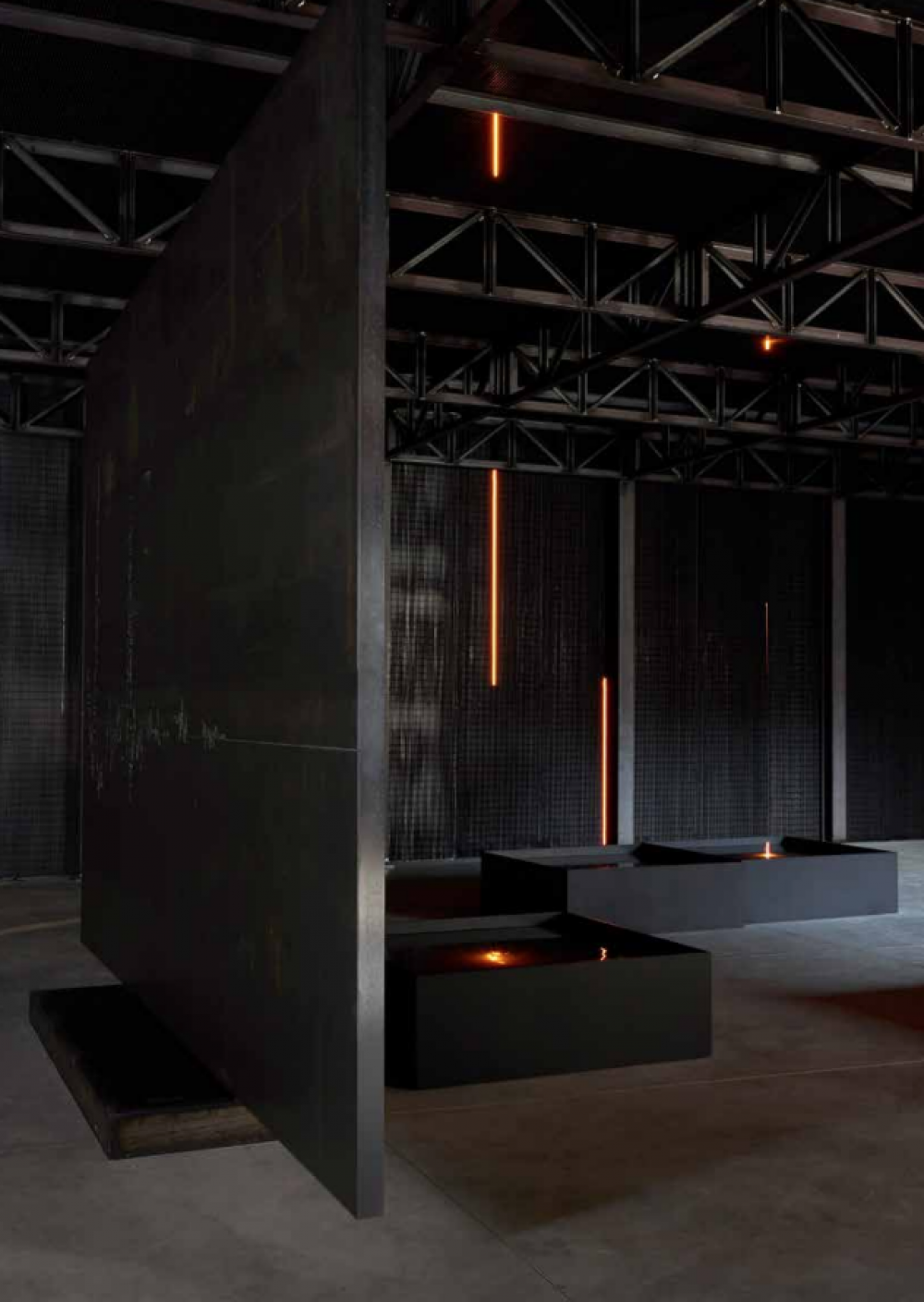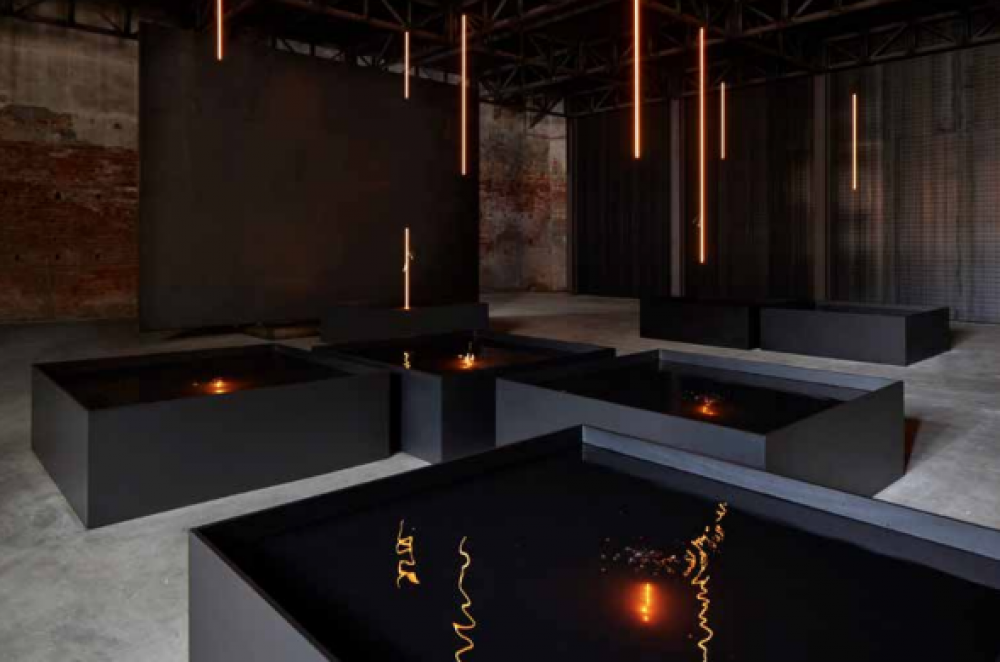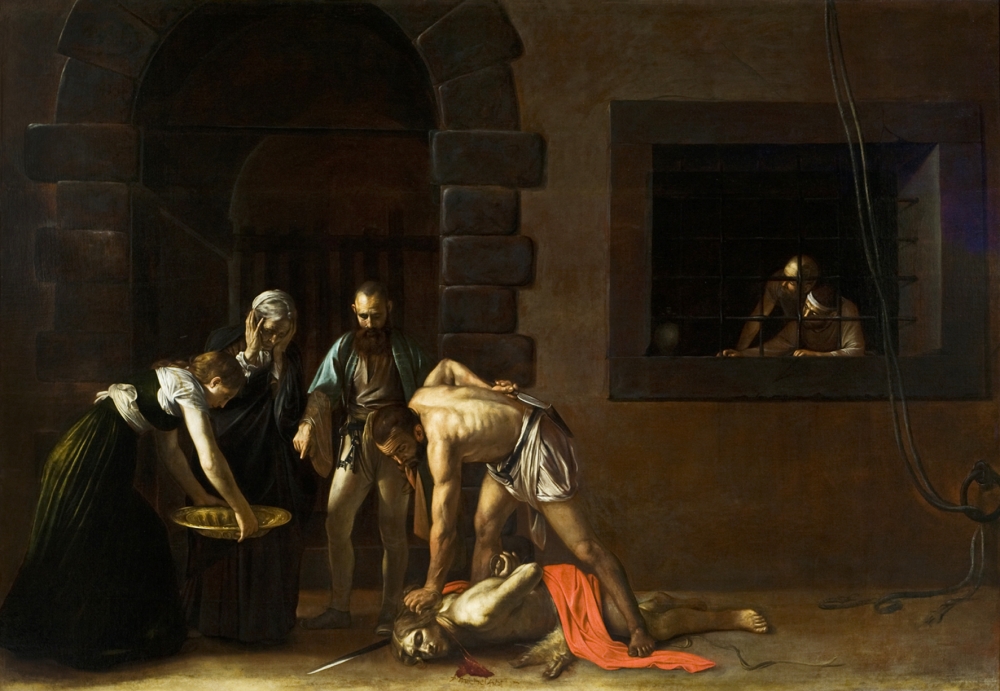Venice Biennale: Malta ‘de-caravaggizes’ the Beheading with fire, rain, and molten steel
The brutality of Caravaggio’s Beheading altarpiece is reimagined for the present – wars, gulags, famines, genocides, and ecological degradation – in a conflagration of molten steel and rain

Malta’s Pavilion at the Venice Biennale this year offers a reimagining of the artist Caravaggio’s seminal The Beheading of St. John the Baptist into an “immersive, sculptural installation that overlays biblical narrative onto the present traversing 1608 to 2022”.
Curators Keith Sciberras and Jeffrey Uslip (USA); artists Arcangelo Sassolino (Italy) and Giuseppe Schembri Bonaci, with his brother and composer Brian Schembri, have re-articulated Caravaggio’s 1608 altarpiece as an immersive, sculptural, site-specific installation that bridges biblical narrative with contemporary culture.
Diplomazija astuta, as the artwork is titled, echoes the absorptive qualities of the Caravaggio canvas by unfolding the altarpiece into the space of the pavilion and into the realm of contemporary social and political discourse.

“By transposing the zeitgeist of the Oratory of the Decollato in Valletta onto the Malta Pavilion, Diplomazija astuta re-situates Caravaggio’s immanent themes within modern life, prompting viewers to traverse a space where the tragedy and brutality of St. John’s execution is experienced in the present, the injustices of the past are reconciled and shared humanist principles can be upheld in the future,” the team behind the Pavilion said.

This is achieved with the use of induction technology, with Sassolino’s molten steel droplets falling from a structure overhead into seven rectangular basins of water, each representing a subject in The Beheading.
Upon contact with the water, the bright orange molten steel hisses, cools and recedes into darkness.

Brian Schembri created a “percussive score” based on Ut Queant Laxis, the hymn attributed to Guido d’Arezzo in honour of John the Baptist, and including rhythmical motifs derived from Carlo Diacono’s two hymns composed on the same Latin text and Charles Camilleri’s Missa Mundi to choreograph the timing and frequency of each descending ember, while Schembri Bonaci’s incisions into the installation itself proposes “a daunting salve that embeds knowledge beyond and within our grasp.”
Arts Council executive chair Albert Marshall said the molten metal and water, Schembri Bonaci’s embedded calligraphic marks, and the cathartic score of Brian Schembri seek to “decaravaggize” Caravaggio.

They do this propelling the Beheading canvas into the Modernism’s century of steel, metal, and silence. “This multidisciplinary work reverberates with echoes of world wars, gulags, famines, concentration camps, genocides, ecological degradation, and anthropogenic hazards,” Marshall said.
“Diplomazija astuta is a forwardl-ooking invitation to understand ourselves, the world, and our place in it; to contemplate who we are now as a collective, who we want to be, and who we can be....
“Seen this way, the Maltese Pavilion becomes, poetically, a proverbial ‘voice in the wilderness’ calling upon the artistic world at large to witness yet another advent of a new age while allowing – lest another false dawn takes hold – the Christian narrative of the Beheading to live on.”
Curated by Keith Sciberras and Jeffrey Uslip, project managed by Nikki Petroni and Esther Flury and supported by Arts Council Malta, this visionary installation is unmissable for anyone in Venice between 23rd April and 27th November.






















